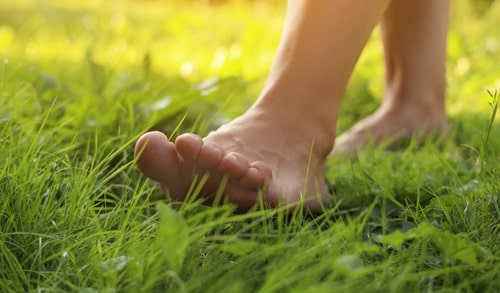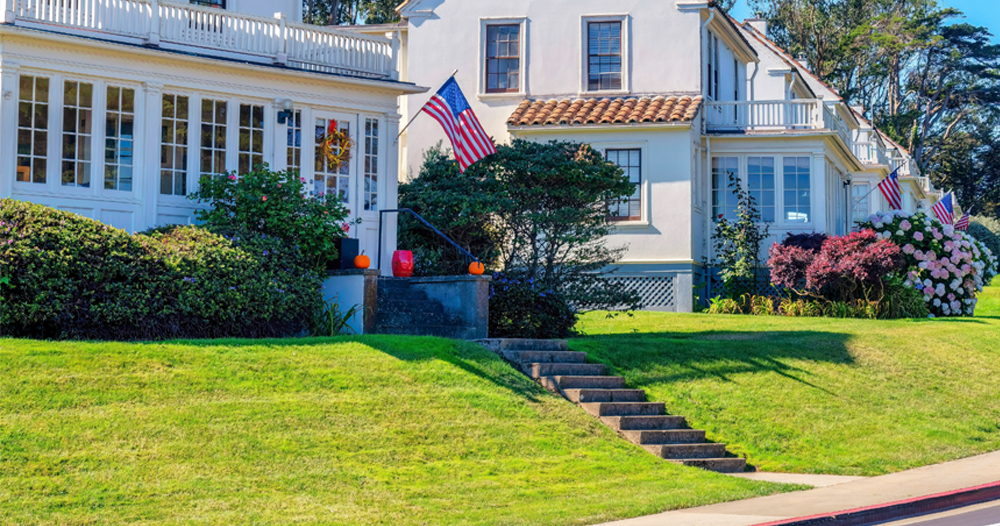
Discover the 7 types of grass planted on lawns in California
Have you ever wondered what's under your feet when you're on a lawn?
In California, choosing the right grass for your lawn can be critical, especially in drought conditions and with limited access to water.
In this article, we'll tell you about the different types of grass that can be used to create green and healthy lawns in California, even during droughts.
And at the end of the article, we'll reveal our own secret on how to make your lawn beautiful even during a drought.
The information presented in this article is based on the experience and knowledge of landscape designers in California. It is not exhaustive, but represents commonly accepted knowledge in the field.
So, in California, located in the zone of hot subtropical climate, different types of grass can be used on lawns depending on the specific conditions of the area: cold-resistant grass species will be suitable for cooler regions of the state, and correspondingly, hot-loving plants will be appropriate for areas with heat.
It should be noted that the presence and popularity of each of these types of grass may vary depending on the specific region of California.
Here is a list of the most common types of grass that can be used for greening lawns in places in California with a hot climate:
Warm-season and cool-season grass varieties planted in California
|
|
-
Bermuda grass
-
St. Augustine grass
-
Zoysia
-
Centipede
-
Bahia
-
Fescue
-
Rye grass
|
|
Of course, there are other types of grass, but the above mentioned species, in our opinion, are the most suitable for the climate of California. Perhaps you may wonder why these specific types of grass are most commonly used to green Californians' lawns.
That's why we'll take a closer look at each of them.
Bermuda grass
And let's begin our review with Bermuda grass. So, Bermuda grass is a warm-season lawn grass that has a very beautiful dark blue-green color in the summer. This grass doesn't require any special care. This type of grass is common throughout California, but it's especially popular in southern regions such as Los Angeles, San Diego, Palm Springs, and Santa Barbara. These areas are known for their warm climate and low rainfall, which makes Bermuda grass an ideal choice for creating a thick and green lawn. Bermuda grass is the most popular type of grass for lawns in California. It's widely used for its durability, ability to withstand drought, and beautiful color. That's why this grass takes the first place in the list of the most popular grasses for lawns used by Californians.
|
|
|
St. Augustine grass
The second most popular grass in California is the sun-loving and fast-growing St. Augustine grass, which will beautifully adorn a lawn during the warm season, especially in periods of heat and humidity. This type of grass also does quite well in dry periods. A lawn with
st.-augustine-grass-color grass is very beautiful, ranging in color from green to blue-green. During the cold season, this type of grass may enter winter dormancy and turn brown until spring warmth returns. Despite being a warm-season grass, its roots are quite dense, and it grows quickly, leaving a lot of thatch. Because of this, St. Augustine grass requires extra attention and care. It has poor wear tolerance, so this should be taken into account when planting it.
|
|
|
Zoysia grass
The next grass on our list is Zoysia, which was imported from Southeast Asia. During the warm season, Zoysia lawns usually have a light green or medium green color, while in winter they turn brown. Zoysia grows very slowly, but this type of grass remains green longer than Bermuda grass and other warm-season grasses in California. In the hot summer months, Zoysia's green mass growth is at its maximum. Adapted to the warm climate and heat, this type of grass has deep roots that retain moisture well. It should be noted that the plant can withstand intensive foot traffic due to its natural flexibility, which allows it to grow a thick grassy carpet capable of suppressing any weeds.
|
|
|
Centipede grass
Next on our list is Centipede grass - a low-growing grass with a natural apple-green color, although over time, a mature lawn will turn yellow-green. This variety of grass grows more slowly than other warm-season grasses but eventually becomes a dense lawn. Centipede grass has a shallow root system that cannot withstand drought, so the grass needs to be watered during hot weather, but not too much to avoid causing water stress. In addition to abundant watering, Centipede grass does not tolerate intense mechanical stress from foot traffic, recovering slowly from it. Your lawn can be very beautiful with Centipede grass provided it is planted in acidic soil.
|
|
|
Bahia grass
Next on our list is a warm-season grass that thrives in California - Bahia. It's a resilient grass with a green color during active growth, and turns brown during dormancy in winter. Thanks to its deep root system, Bahia can withstand drought and looks great on a lawn where many other grasses dry out. Although this is a very coarse type of grass, it grows densely and forms a thick carpet. In the hot climate conditions of California, Bahia produces a relatively durable, low-growing lawn that doesn't require special care. The plant can handle mechanical stress from foot traffic quite well.
|
|
|
Fescue grass
So, we've come to the penultimate type of grass commonly used for lawns in California - Fescue. There are different types of Fescue grass, but we'll now consider the most common type - tall Fescue grass. This is a perennial cool-season lawn grass that also tolerates drought very well. Tall Fescue grass has very coarse, ribbed, emerald-green stems that recover well after being subjected to foot traffic, although the plant has a limited lifespan.
|
|
|
Rye grass
And completing our list is Rye grass - a grass for lawns that can tolerate both cold and hot temperatures in California. There are many different types of Rye grass, but we will now focus on the perennial variety of this grass, which is most common in Northern California. This grass has thin emerald-green stems with a rough texture, it germinates quickly and establishes well in the soil. Thanks to perennial Rye grass, you can enjoy a green lawn in winter. Perennial Rye grass does not require special care. It recovers well after mechanical impact from foot traffic.
|
|
|
Having now familiarized yourself with the different types of grass and their appearance, you have an idea of which variety you could use on your lawn. You can now consult a landscape designer in your area for a more detailed discussion about your lawn.
To ensure that your lawn stays green even during hot and dry spells, we offer an interesting solution that is specifically designed to provide plants with the necessary amount of water during drought periods.
Not only will your plants look healthy and strong in the heat, but you can also save up to 40% on the water when irrigating them, as water has become a valuable and expensive resource in drought conditions.
If you are interested in learning how you can save money by using less water to irrigate your lawn during dry spells, simply click on this banner to find out more.
Thank you for reading this article!
We hope it has been helpful to you.
Good luck in choosing the right grass for your lawn!
|




